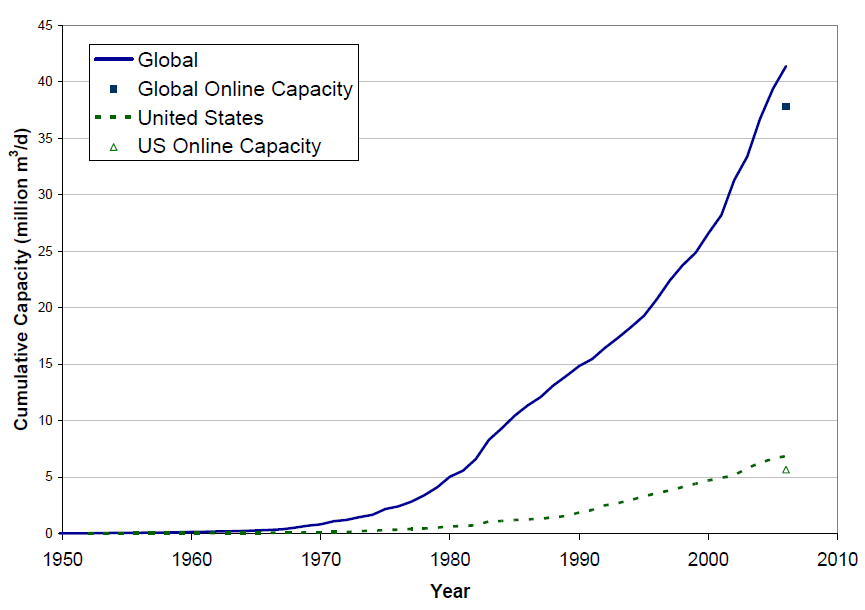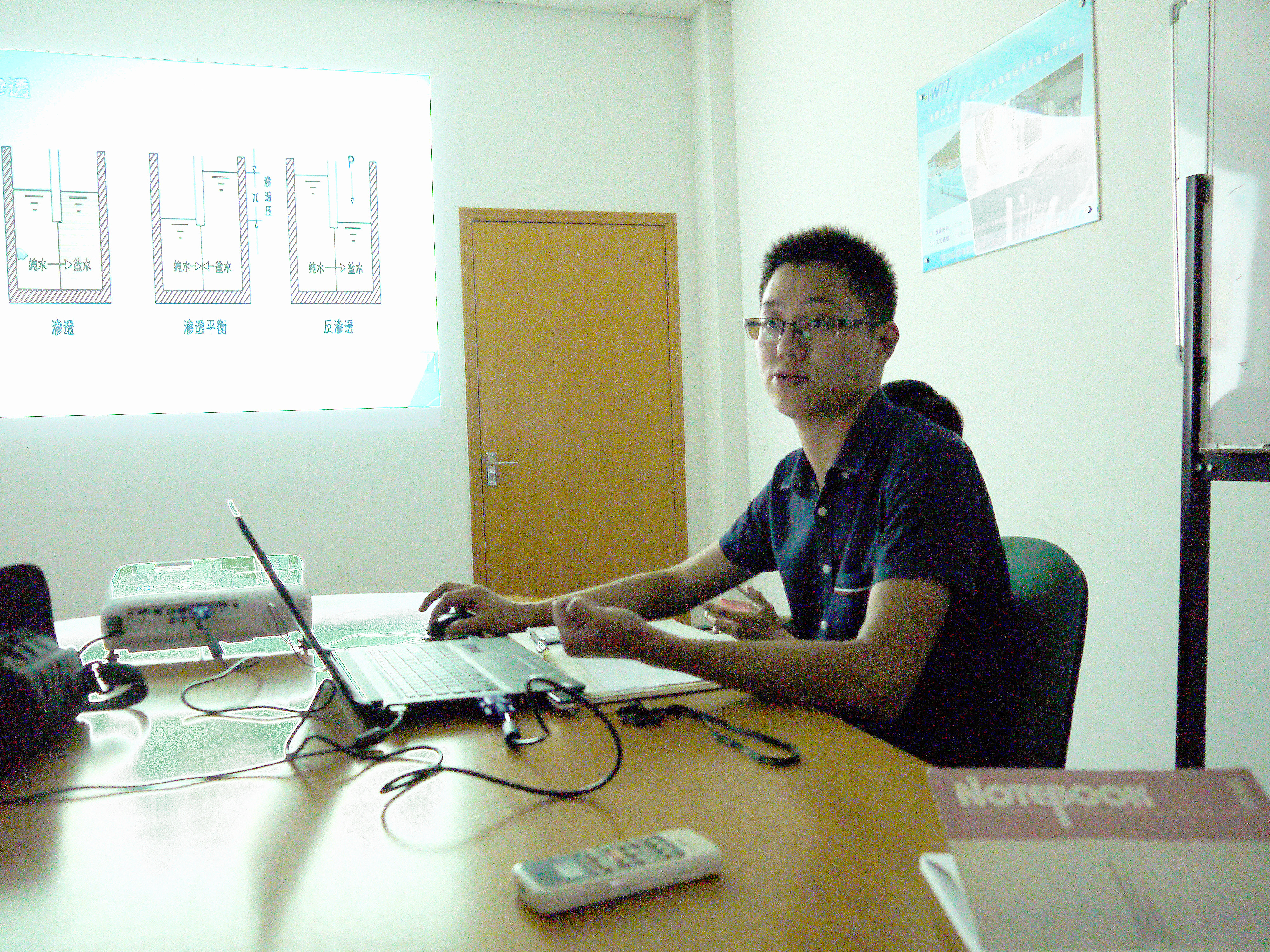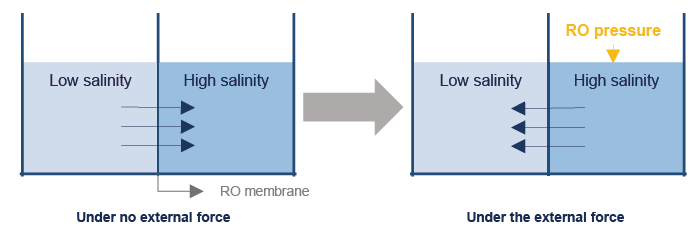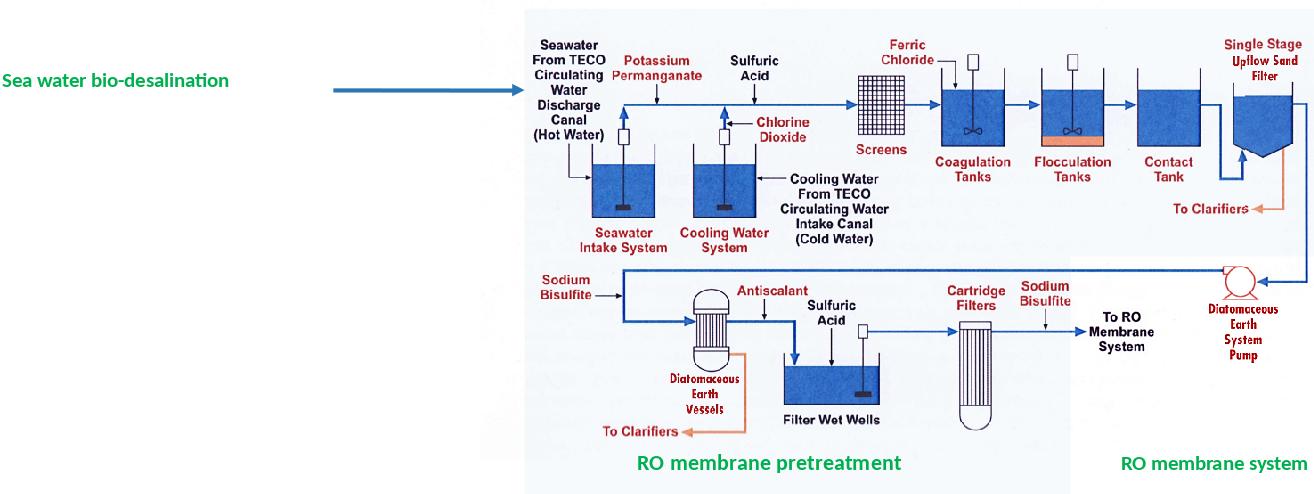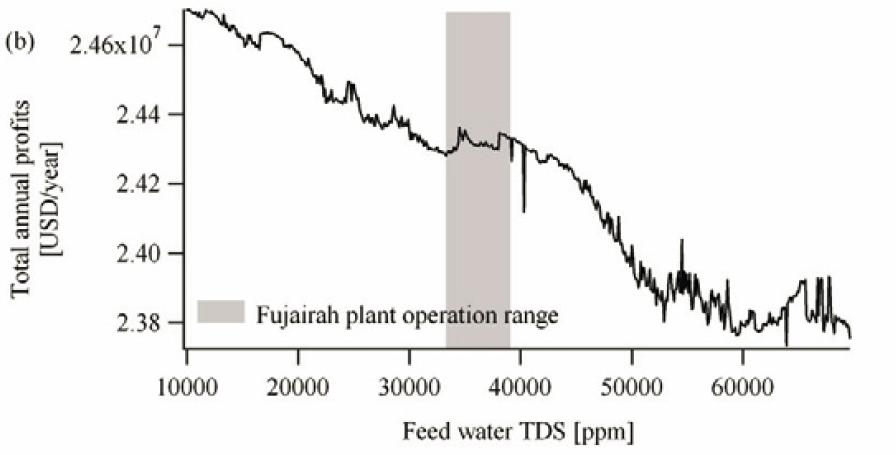Team:SJTU-BioX-Shanghai/Human Practice/Desalination
Among various desalination methods, Reverse Osmosis Method (RO Method) had a rather short yet rapid developing history. Now, it shares nearly half of the global desalinated water production capacity. As a new desalination tool, the project should be evaluated against traditional methods. In this page, you will see our partly comparison against RO method based on our results. Furthermore, how two methods might cooperate with each other to achieve an better effect.
Contents
The desalination industry
Figure 6.3.1 Cumulative capacity of installed desalination plants in the United States and worldwide from 1950 to 2006. (NEP, 2008)
Data Source: GWI, 2006b
Desalination method has been used for hundreds of years to produce fresh water, but large-scale municipal drinking water distillation plants began to operate during the 1950s (Gleick, 2006). Over years, this industry become more and more important due to the increasing water demand of human activities. Until 2013, global desalination water production capacity has increased to 85.9 million m^3/d. (Shumo, 2015)
Various methods
| Membrane method | Thermal method | |
|---|---|---|
| Salt separation | Electrodialysis (ED) , Ion exchange | |
| Water separation | RO membrane (RO) | Multistage flash (MSF), Multiple effect distillation (MED), Vapor compression (VC) |
Table 6.3.1 Predominant desalination methods and their classification
As table 7.3.1 shows, the methods varies. For any ones concerns, we gives explanation to every methods listed in this table.
We will look close up to one of the method, RO method and its mechanism in next section.
Electrodialysis (ED)—A process of desalination whereby an electrical current is used to separate out salt and impurities in the intake water through the use of semipermeable, ion-selective membranes operating in a DC electric field. The major method in the Middle East is thermal desalination because of it rich oil deposits.
Ion exchange - A chemical process involving the reversible exchange of ions between a liquid and a solid.
Multiple effect distillation (MED) - A thin film evaporation process where the vapor formed in a chamber, or effect, condenses in the next, providing a heat source for further evaporation.
Multi-stage flash distillation (MSF) - A desalination process where a stream of brine flows through the bottom of chambers, or stages, each operating at a successively lower pressure, and a proportion of it flashes into steam and is then condensed.
Reverse osmosis (RO) - A method of separating water from dissolved salts by passing feedwater through a semipermeable membrane at a pressure greater than the osmotic pressure caused by the dissolved salts. RO operates via a solution/diffusion mechanism whereby the water dissolves into and diffuses through the nonporous membrane, leaving the majority of the salts behind in the concentrate. RO membranes are also capable of removing some larger organic contaminants. Small uncharged species can pass through the membrane. Water that passes through the membrane leaves the unit as permeate or product water; most of the dissolved impurities remain behind and are discharged in a brine or waste stream.
Vapor compression evaporation (VC/VCE)—Thermal desalination processes that utilize heat from compression of water vapor for subsequent evaporation of feedwater, either with a mechanical compressor (mechanical vapor compression, MVC) or a steam ejector (thermal vapor compression, TVC). Vapor compression processes are particularly useful for small to medium installation.
Reverse Osmosis Method
Which desalination method will be the key to this industry?
In 2008, membrane and distillation processes equally share current desalination production capacity worldwide (Greenlee, 2009). We can’t find the current information, yet, RO technology can produce fresh water (from seawater) at one-half to one-third of the cost of distillation in 2008 already (Miller, 2003).
The Middle East holds approximately 50% of the world’s production capacity (and 2.9% of the world’s population) and has forged ahead as the leader in large-scale seawater desalination (Greenlee, 2009). In 2005, Israel opened the world’s largest seawater RO desalination plant, with a production capacity of 330,000m^3/day (Sauvet-Goichon, 2007).
These might not prove that RO method will be the most popular method, but it will certain prove that it will be one of the most popular methods. With this in mind, we thought it may be great to visit a RO membrane research center.
Visit to HWTTDC
Figure 6.3.2 Hangzhou Water Treatment Technology Development Center Visit
One of the researchers, Yu Zhang, is presenting the mechanism of RO membrane.
On Aug. 8, 2015, we visit the Hangzhou Water Treatment Technology Development Center (HWTTDC). It is the supporting unit of National Engineering and Technological Research Center for Liquid Separation Membrane and a base for the national membrane sector. Their vice director, Hongqiang Li, and several people from the research team received us.
During our visit, the center gave us a detailed presentation of RO method including its current situation, mechanism, whole process, technological and other difficulties. When we explained our project, they showed great interest on this new approaching way. The question they asked most is how efficient this method can be. Unfortunately, that time we were half-way of transformation, so we can’t answer very clearly. Yet, they still inspired us on combing two methods instead of replacing one.
After this visit, we follow the big picture that center gave us and filled in with details below.
The mechanism of RO method
To understand RO method, the first step is to learn how it works. The mechanism of RO method can be explain through two parts: membranes and pressure.
First, RO membranes are special membranes. Its layered, web-like structure only allows water to pass through by a tortuous pathway. Unlike nano-filtration (NF), ultra-filtration (UF) or micro-filtration (MF), RO membrane reject the smallest contaminants, monovalent ions. This properties allows this kind of membrane to process seawater desalination and even other filtration process requiring removal of monovalent ions.
The other important elements of RO method is osmotic pressure. Figure 6.3.3 shows the simplest figure explanation how it works. In a normal status, water molecules always move from low salinity area to high salinity area. This force we called it osmotic pressure, yet, desalination process is working against osmotic pressure. Therefore, we have to give an artificial pressure called reverse osmotic pressure, which is where RO comes from. This extra pressure requirements is also the main cost of desalination process.
The method comparison
In a word, our project favors the starting point, and RO method favors the ending point. Using the human practice experience, we made a simple table 6.3.2 to compare their characteristic. As you can see, some actual of our project is remain unknown.
For example,we have difficulties in estimating the energy cost of our project via our model result. Frankly speaking, we could give an estimated value but we can’t control the error of the estimated value. Such difficulties are caused by insufficient parameters setting. We judge our current modeling results in qualitative sense but not in quantitative sense. As a result, the energy cost is not suitable to calculate by our model.
In table 6.3.2, we marked our estimated advantages into green.
| Seawater RO | Our project (bio-desalination) | |
| Main Energy form | Mechanical (electrical) energy | Light (solar) energy |
| Energy cost(kWh/m^3) | 2.5-7 | N/A (estimated to be lower) |
| Pretreatment requirement | High | Low (The more nutrient it contains the better.) |
| Operating temperature (℃) | <45 | <45 |
| Product water quality (Remove racial of total dissolved solids) | 95%-99%(single RO pass) | estimating 18%-20%(based on lab result) |
| Typical water recovery | 35-50% | N/A (depend on separation efficiency) |
Table 6.3.2 The comparison chart of RO membrane and Our project.
Combination possibility
Overall, our project is expected to working independently with its own pretreatment and after-process, but we think it will be great to find a collaboration way with current method. Either way, our goal is to find the most efficient and feasible way for seawater desalination.
In last section, we mentioned that our project favors the starting point, and RO method favors the ending point. However, it is not enough if the power is only simple as 1+1=2. Here’s some reasons why we think that the combination contains a lot of potential.
Figure 6.3.4 The rough design of seawater bio-desalination & RO method system
Figure source of pretreatment: NEP, 2008, Tampa Bay Water.
Process order:
The idea of combing two methods comes from that bio-desalination water separation process can work under similar circumstance of some pretreatment of seawater in RO desalination plant at first place. As figure 6.3.4 below, the pretreatment of seawater is complicated and throughout. The idea is to ensure that constituents, in the source water do not reduce the performance of the RO desalination facility (NEP, 2008)
After discussing with the Hangzhou Water Treatment Center, we think that bio-desalination should be add in the first step of seawater treatment. It is because the source water has the most impurity and will provide a more favorable environment for cyanobacteria. The other reason is either using its own separation method or altering a few steps of RO membrane pretreatment. The pretreatment of RO will ensure that there’s no cyanobacteria left behind during RO membrane process.
Energy cost:
Figure 6.3.5 The changes of total annual profits by feed concentration changes(ppm);
Data resource: Kim et al,2009
In some way, our project can be understand as one of the pretreatment of RO membrane method. It will lower the salinity. As figure 6.3.5, the lower salinity is, the more profit RO method makes bacuse of less operating expenses. Our project will also helps to expand RO membrane’s life and cleaning cycle.
However, the key is how our project will lower the salinity and if the costs is lower than original costs, especially energy cost. Our project is still in the rotation stage into large-scale industry. Thus, this question needs to be answered in the future.
Reference
Gleick, P.H., 2006. The World’s Water 2006–2007, The Biennial Report on Freshwater Resources. Island Press, Chicago.
Greenlee, L. F., Lawler, D. F., Freeman, B. D., Marrot, B., & Moulin, P. (2009). Reverse osmosis desalination: water sources, technology, and today's challenges. Water research, 43(9), 2317-2348.
GWI. 2006b. 19th IDA Worldwide Desalting Plant Inventory. Oxford, UK: Media Analytics Ltd.
Kim, Y. M., Lee, Y. S., Lee, Y. G., Kim, S. J., Yang, D. R., Kim, I. S., & Kim, J. H. (2009). Development of a package model for process simulation and cost estimation of seawater reverse osmosis desalination plant. Desalination, 247(1), 326-335.
Miller, J.E., 2003. Review of Water Resources and Desalination Technologies. Available from: Sandia National Laboratories http://www.prod.sandia.gov/cgi-bin/techlib/access-control.pl/2003/030800.pdf (accessed 25.05.08.).
NEP, U. (2008). Vital Water Graphics an Overview of the State of the World’s Fresh and Marine Waters.
Sauvet-Goichon, B., 2007. Ashkelon desalination plant –a successful challenge. Desalination 203, 75–81.
Shumo, L., Aifu, L., & Liang, Y. (2015). The Engineering Economy Analysis of Large-Scale Seawater Desalination Water Supply Project in China. China Science and Technology Innovation Herald, 16, 039.
Next: Cell Water Seperation
